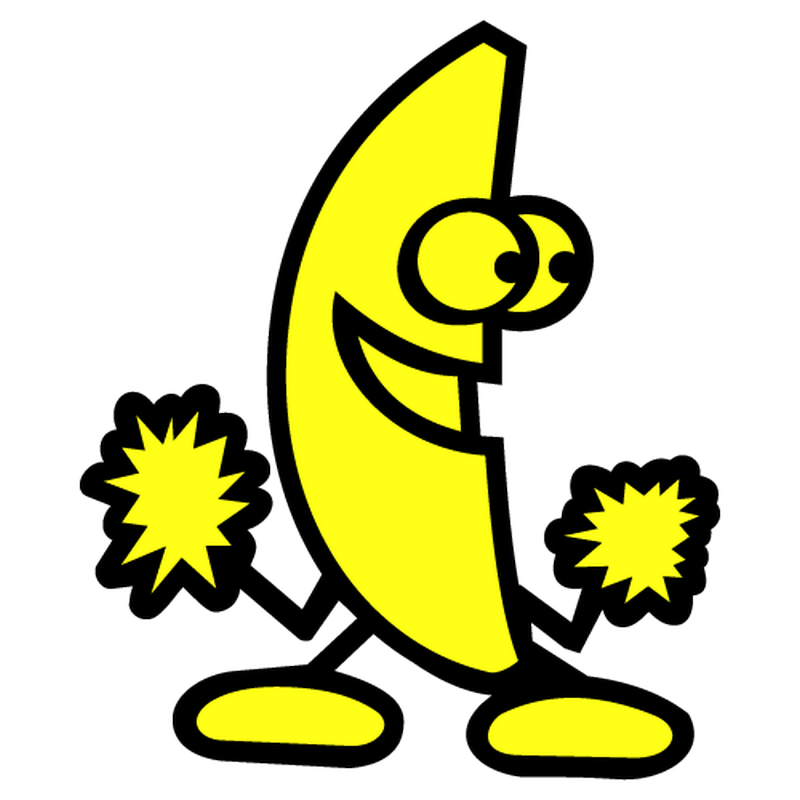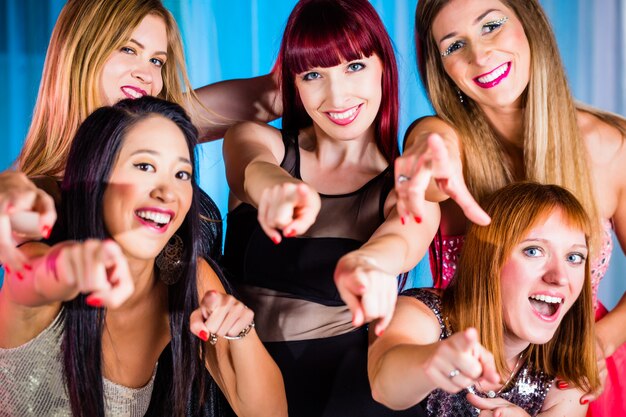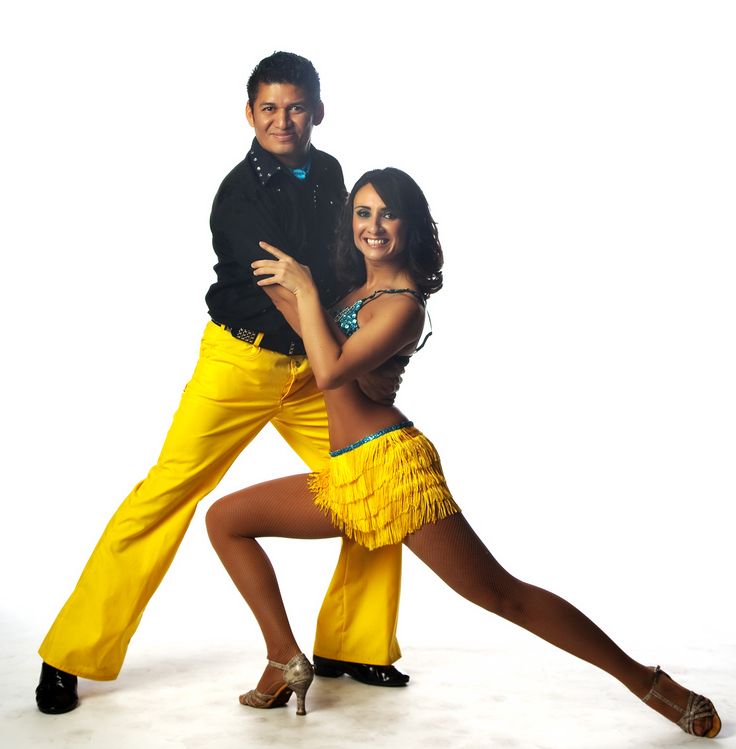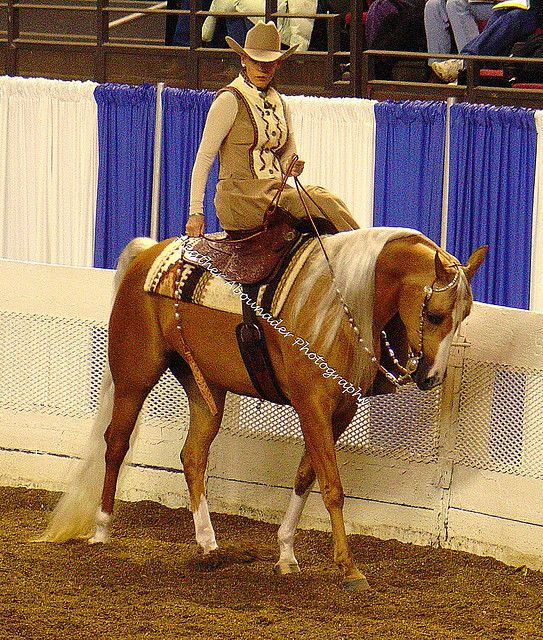How to dance without being stiff
How To Not Look AWKWARD When You Dance
Do you feel awkward when you dance??
It’s pretty normal to feel insecure about your dancing.
I mean, it’s your body. Your literal SELF that's being put out there!If you’re that person at the club swaying awkwardly or hanging out by the wall at a school dance…
We’re here to help make you feel more comfortable in your body.
Ready to stop being a wallflower?? Wanna get movin’ and groovin’??!?!
Let’s go!
1. Own your style
If you feel awkward when you dance, then you will look awkward when you dance. And if you keep telling yourself you're awkward, then you will stay awkward.
The first step to overcoming awkwardness is to stop that self-deprecating narrative.
You don’t have two left feet.
You do have rhythm.
You can be a good dancer.
Re-defining your view of yourself is the only way you allow yourself to grow.
And if you're truly convinced that you can't follow a beat or stop tripping over yourself... just take some time to practice those basic foundations!
STEEZY's online "Intro to Dance" program walks you through all of the fundamentals step-by-step, so it's the perfect place to start.
Click here to start the program for free!
2. Find your body’s natural groove
No two people in the world have the exact same bodies, music tastes, dance training, or life experiences. This means that no two people really dance the same.
Everyone dances like themselves. You, included! So find that groove that feels right to you.
When you take class, modify the choreography to fit your body. And when you freestyle, just start with a basic two-step.
That simple left-right, right-left skeleton leaves SO much room for you to build off of.
Feel the way your body reacts to the music...
Let yourself groove out...
3. And COMMIT to it
A lot of the time, dancers will look awkward because they PLAY THEMSELVES!!
That slight hesitation, that SMIDGEN of under-delivery, that look of “oh sh*t” on their faces…
Awkward.
Knowing and committing to yourself is the only way you won’t look awkward when you dance.
4. Loosen up!
Really, an instant fix. Most people look awkward when they dance because they are stiff. And they’re stiff because they aren’t moving.
Don’t lock your knees.
Free your neck to let your head bob.
Shake out your arms.
Relax your core.
You can even do some stretching or pilates to help your muscles get used to that relaxed, loose state!
This pilates class on STEEZY is perfect as it's literally designed to loosen the muscles you use when you dance.
So get LOOSE. No excuses.
5. LISTEN to the music
Maybe you look awkward when you dance because your body isn’t matching the tempo of the music.
Simply aligning the rhythm of your movements to the beat will make your dancing look a lot more put together.
Or, your vibe isn't matching the vibe of the song, making your dancing look off.
Follow Melvin Timtim's advice on this:
6. Have fun
I’ve never watched someone genuinely love what they’re doing and judged them.
Pure fun never looks or feels awkward.
So stop overthinking! Put on a soundtrack to a musical you love and lip sync it all the way through. Blast some dirty rap music in your car and go awff.
Play some sexy bedroom music and serenade your lover. At the end of the day, dance is something that lets you play.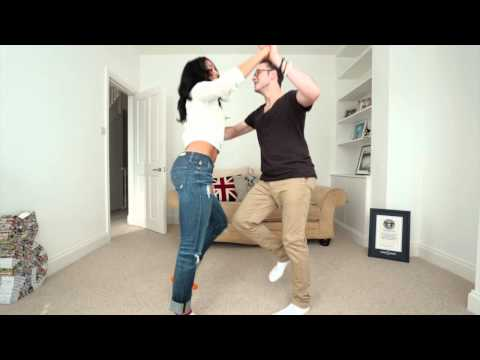
You can be anyone you want, do anything you want, and escape from whatever stresses are plaguing your mind.
Dance is an escape, not another stressor.
So have fun with it :) and looking dope will happen on its own. Being a good dancer or a bad dancer, a dope one or an awkward one...
It depends on what you practice – both mentally and physically. Use these tips to make dancing look and feel like second nature.
You’ll be tearin’ it up on the dance floor in no time.
What are some things that helped you overcome looking awkward when you dance? Comment below and leave a tip!
Classes on STEEZY Studio help you loosen up to move more comfortably.
Take our beginner program to learn the essential grooves to start with!
How to Not Be a Stiff Dancer
Jupiterimages/Brand X Pictures/Getty Images
By: Judy Fisk Updated September 15, 2017
Whether you are a student of dance or someone who enjoys informal social dancing, you may worry that your movements are too stiff and awkward.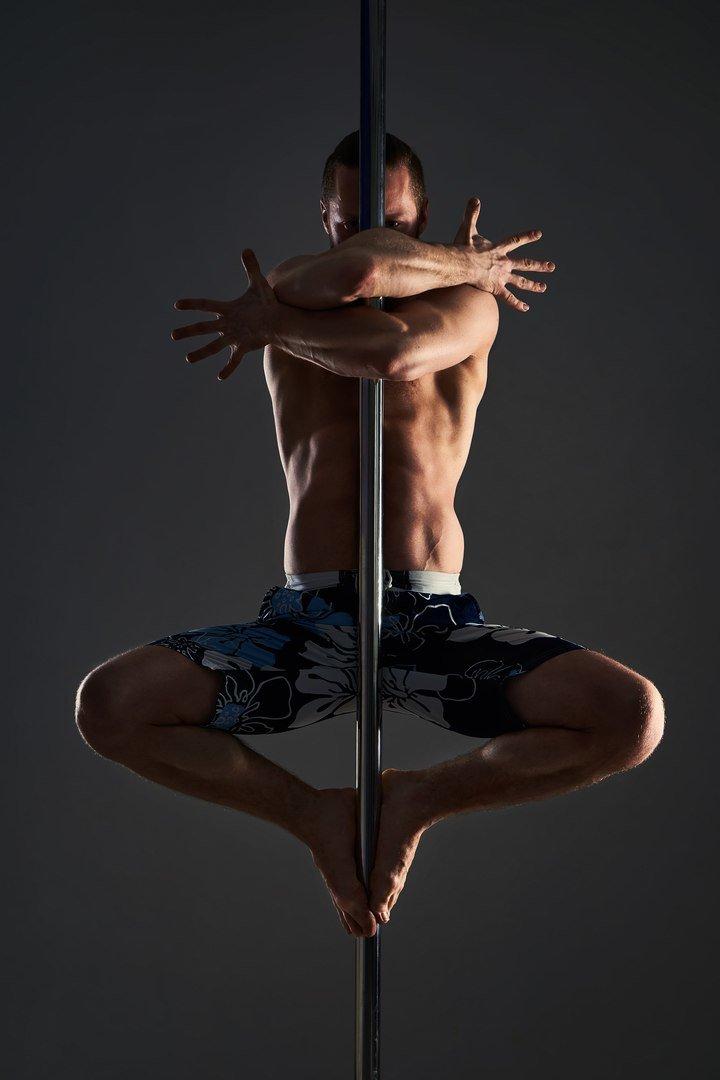 Ironically, feeling anxious about how you appear on the dance floor, in the studio or onstage can actually cause your joints and muscles to tighten up. You can take concrete steps to build your confidence and to loosen up physically. As a result, you will feel – and appear -- more relaxed when you move and you will get far more pleasure from dancing.
Ironically, feeling anxious about how you appear on the dance floor, in the studio or onstage can actually cause your joints and muscles to tighten up. You can take concrete steps to build your confidence and to loosen up physically. As a result, you will feel – and appear -- more relaxed when you move and you will get far more pleasure from dancing.
Take dance classes to increase your physical self-awareness and to build confidence in your movement ability. Expose yourself to a variety of dance styles and, in the process, increase your flexibility and muscle tone and improve your posture, balance and coordination. Gain greater awareness of how your body is organized and become more in tune with how it moves.
Warm up and stretch your muscles thoroughly before dancing. If you spend many hours every day working at a desk or computer, you may suffer from shoulder stiffness and tight muscles and joints. Counteract that stiffness by walking in place for five to 10 minutes and then engaging in basic stretches to loosen up your muscles before executing more rigorous dance moves.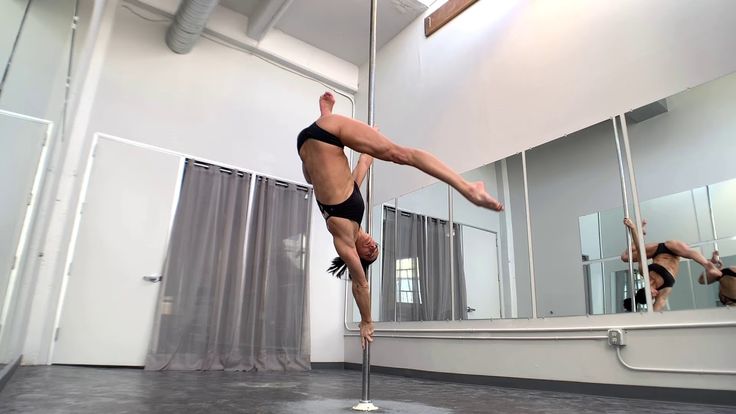 Warmer muscles will respond more readily to conscious efforts to relax them.
Warmer muscles will respond more readily to conscious efforts to relax them.
Relax at the joints, particularly in your fingers, elbows and shoulders. Note if you hold your your chin and neck too rigidly and consciously shed any tension you experience from the shoulders upward. For social dancing, bend slightly at the knees and ankles to give yourself greater range of motion in the hips.
Breathe deeply five to 10 times to shed the tension of your day before heading out to the dance floor, studio or stage. With every outward breath, think of letting the air flow through to your extremities and consciously soften your muscles and joints.
Know your choreography. If you are performing on stage and are concerned about appearing stiff, review the moves you will be performing until you know them exceptionally well. Adequate preparation will help you stay calm when you head into the studio to rehearse or when you step onstage. Review choreography in your head whenever you have a quiet moment, such as when you are lying in bed at night or during your commute to work or school.
Enroll yourself in a yoga class and attend faithfully. Learn the basic poses and breathing techniques and tackle the stress and anxiety that may be causing your muscles and joints to tighten up. Yoga technique can help you consciously "soften" the areas that are tense and stiff and add fluidity to your dance movements.
References
- Lehigh University: Stretching – An Introduction
- Mayo Clinic: Yoga -- Tap Into the Many Health Benefits
Writer Bio
Judy Fisk has been writing professionally since 2011, specializing in fitness, recreation, culture and the arts. A certified fitness instructor with decades of dance training, she has taught older adults, teens and kids. She has written educational and fundraising material for several non-profit organizations and her work has appeared in numerous major online publications. Fisk holds a Bachelor of Arts in public and international affairs from Princeton University.
Related Articles
Dive into the depths of the dance.
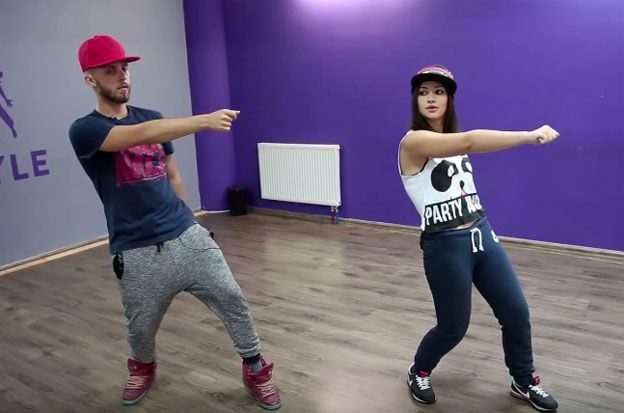 Muscles: zoukability — LiveJournal Author: Murasheva Nadezhda
Muscles: zoukability — LiveJournal Author: Murasheva Nadezhda Friends, I am starting a block of articles about the "underwater" part of the dance. We will explore the topic in more depth, how to learn to move beautifully and plastically and hear your partner. If you don't go to some third-party classes and master classes outside of social dances, then these topics are almost not covered in the lessons. In good classes, the correct work of the muscles is sorted out, but this still does not add up to a comprehensive picture.
In one of my previous articles, I likened dance to a big iceberg, the main part of which is hidden under water and opens up to us as we deepen into the knowledge of dance, movement, and our body. When a non-dancing person looks at the dance from the side, he sees the tip of the iceberg - its external manifestation. A beginner dancer continues to see only this top for a long time (and sometimes it ends with this), because the dance for him still remains a set of movements - an external form. Even if these are movements from an advanced lesson. Beautiful, cool, complex, spectacular. "I want that too." Growing dancers begin to master all these complex movements, go into narcissism and show off through figures. When I look at dancers at parties it's 90% of the time I see exactly this - chasing the outer form. Sometimes tops dance like that. Dancers think in figures. But this is only the surface ABOVE the water! All the most interesting is deeper.
Even if these are movements from an advanced lesson. Beautiful, cool, complex, spectacular. "I want that too." Growing dancers begin to master all these complex movements, go into narcissism and show off through figures. When I look at dancers at parties it's 90% of the time I see exactly this - chasing the outer form. Sometimes tops dance like that. Dancers think in figures. But this is only the surface ABOVE the water! All the most interesting is deeper.
And what is there, in the depths, "under water"?
- The world of connection with a partner. What does it depend on? From connecting with yourself. How to feel a partner if you don't feel your own body?..
- Control of your body: muscle tone, ability to relax, control of your body structure, general feeling and awareness of your body.
- Feeling and awareness of oneself as a whole. After all, our body and consciousness are interconnected, and the state of one is reflected in the state of the other.
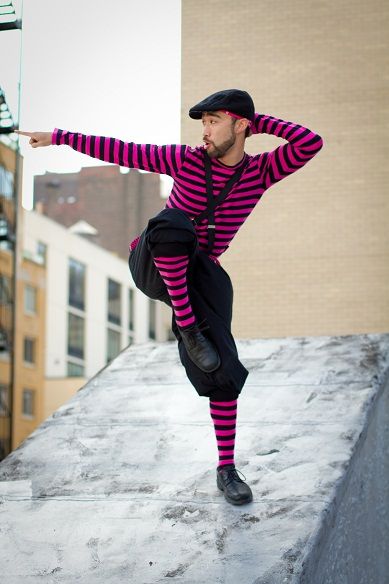 By acting on one, we have an effect on the other, and vice versa. Both in a positive and negative way. What a person has inside is how he moves.
By acting on one, we have an effect on the other, and vice versa. Both in a positive and negative way. What a person has inside is how he moves.
So, today we will begin to consider the level closest to the surface of the iceberg - muscle control . It is also the easiest to understand and use. When you better understand what muscles are performing movements, what to follow, your movements will become clearer, cleaner, more conscious.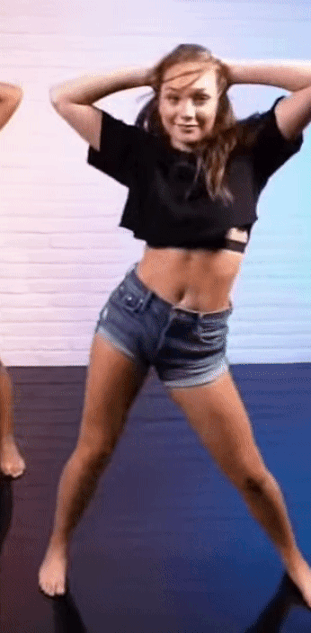 The movements that you learned by visually copying after the teacher will become clear from the inside: what works, why it works and what you need to make it even better.
The movements that you learned by visually copying after the teacher will become clear from the inside: what works, why it works and what you need to make it even better.
Why is this level closest to the surface? Because muscle ownership determines how your movements will look (but not only from this), because your balance, rotations, cambrai and much more depend on muscle tone.
And it is the simplest because it is much easier to pump up muscles than to learn isolation, relaxation and finer sensations. Muscle training is just a physical activity, albeit hard sometimes. Any dancer can pump up the press, which, however, will not teach him plasticity and connection with a partner.
Muscles not only help us perform movements correctly and beautifully, but also protect us from injuries, which is why it is so important to develop our physical form.
One of my favorite themes is that if you just go to the gym and pump something there, it doesn't help you dance properly at all. In addition to having a pumped up muscle, you must learn how to use it in dance movements, keep it in good shape on the machine, without flying out of your attention from the dance and connection, otherwise your work in the gym is useless. This is a characteristic feature of the dance. In the gym, we learn to tense our muscles strongly and relax 10-50 times. We leave the room and forget about them.
In addition to having a pumped up muscle, you must learn how to use it in dance movements, keep it in good shape on the machine, without flying out of your attention from the dance and connection, otherwise your work in the gym is useless. This is a characteristic feature of the dance. In the gym, we learn to tense our muscles strongly and relax 10-50 times. We leave the room and forget about them.
In dancing, you need to constantly keep in good shape and control many different muscles at once. This is a lot less tension than in the gym, but getting used to this state of constant soft tone can be very difficult. The dancer must have good control over his entire body in dynamics and statics, must be able to control tension and relaxation (stability and plasticity), feel his individual muscles (isolation), must have acquired the skill of holding passive attention at several points at once (back, abs, feet as minimum), which should not distract from the dance itself, connection, music and the surrounding space.
Note: The article does not take into account physical limitations due to injuries, hernia, protrusions, etc.
PRESS
Upper, lower and oblique abdominal muscles.
From an anatomical point of view, the abdominal muscles give stability to our spine (in fact, this is somewhere around 50% success). - Balance, rotation, stability, yes, yes
Using the press greatly reduces the load on the back when bending and tilting, it helps to build the axis on rotations. And therefore, a non-working press creates an overload of the lower back and other parts of the spine, which is fraught with muscle and nerve clamps, displacement of the spinal discs, hernia and chronic back pain, especially among zuckers. And with a broken press, you will be chatting on all rotations.
The oblique muscles of the abdomen give us plasticity, beautiful tilts to the sides, light soft work of the body in a circle and, of course, additional stability in difficult positions of the body.
If we talk about the zouk, then we actively use the press in all movements with body inclinations (cambrai, headworks, bones, etc.), on rotations, on counterbalances. Wherever we need stability, a strong body, a straight back (in particular, the lower back). The press is collected on all supports and "falls" on a plank-type partner so that the body does not fall through. Sometimes, for even greater stability and inclusion of the press, you need to twist the pelvis forward even more (a la Michael Jackson) to fix the body even more strongly. I use it on cambra preps, bone necks, long spins. But you need to understand that the press does not tense up in the dance with an impenetrable shield as before the opponent's blow (then the dance would be too hard and exhausting). The work of the press is rather similar to what happens in Pilates: the navel is pulled up to the spine and remains there in a passive tone always. If necessary, the lower or upper press is additionally strengthened.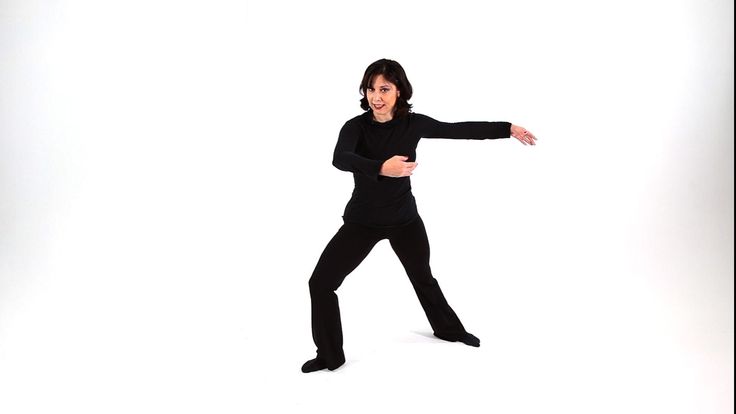
Interestingly, in zouk, a number of common movements require isolated possession of the upper and lower press. So, for example, when working with the chest (headworks, etc.), we weaken the upper press, but firmly hold the lower one - for stability, balance, so as not to fall apart.
Alas, even with trained abs, many dancers don't use them. They make movements with a relaxed stomach, which is why they fall apart, lose structure in the body. Using the abdominal muscles should be a habit. Spent, automatic. However, like all other muscles, which will be discussed further. In order not to think every time about all the muscles that need to be included.
You can often see dancers in a position of constant arching in the lower back even just standing still. This is an indicator that they do not use the press at all;) In the position of the lumbar deflection, it is possible to draw in the stomach a little, but it is impossible to fully use the press. Which is logical, because when in one place there is contraction, tension (in the lower back), then on the other side there is stretching and relaxation.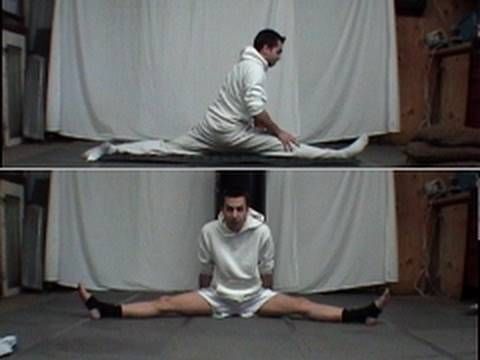
Another common mistake is the constant deflection under the shoulder blades, which is what they say "remove the ribs" in ballet lessons. This is a deflection above the waist, which means that in this case the upper press does not turn on and, as a rule, the back muscles in the thoracic region and sometimes between the shoulder blades are strongly clamped. It is very difficult to get rid of this habit. Usually combined with a lumbar deflection. The ribs stick out in front, the butt is behind, and somewhere in the middle in the bend is a poor, clamped spine.
Basicly everyone knows how to pump the upper and lower press. There are a lot of options. I will only add that, firstly, you should not put your hands on your neck and try to lift yourself with a jerk of your arms or head - this is technically incorrect and dangerous, hypertension is created in the neck, and in fact you lift yourself with your neck, not with a press. It is better to keep your hands on your chest or on your stomach. If the press is weak, then it will be more difficult, yes. But now you do not deceive yourself. And secondly, if you swing the lower press by raising your legs, then there should be no deflection in the lower back. If the lower back sags, it means that you do not have enough strength and abs and back, and instead of the lower press, you again overload your back. Press your back completely to the floor and bend your knees - this will be better. And yet, given the peculiarities of the dance work of the muscles, it is better to do all exercises slowly. No need to chase the number of movements. Let them be only 10, but each stretched into 10 accounts, for example.
If the press is weak, then it will be more difficult, yes. But now you do not deceive yourself. And secondly, if you swing the lower press by raising your legs, then there should be no deflection in the lower back. If the lower back sags, it means that you do not have enough strength and abs and back, and instead of the lower press, you again overload your back. Press your back completely to the floor and bend your knees - this will be better. And yet, given the peculiarities of the dance work of the muscles, it is better to do all exercises slowly. No need to chase the number of movements. Let them be only 10, but each stretched into 10 accounts, for example.
The oblique muscles of the abdomen are trained with various twists and tilts to the sides. Twisting should be smooth, on the muscles, not jerky. Turns are carried out from the waist, the hips should not turn anywhere - this is important and a common mistake. So that the hips do not exactly spin, you can do twists while sitting on the priest (and at the same time keep a straight back).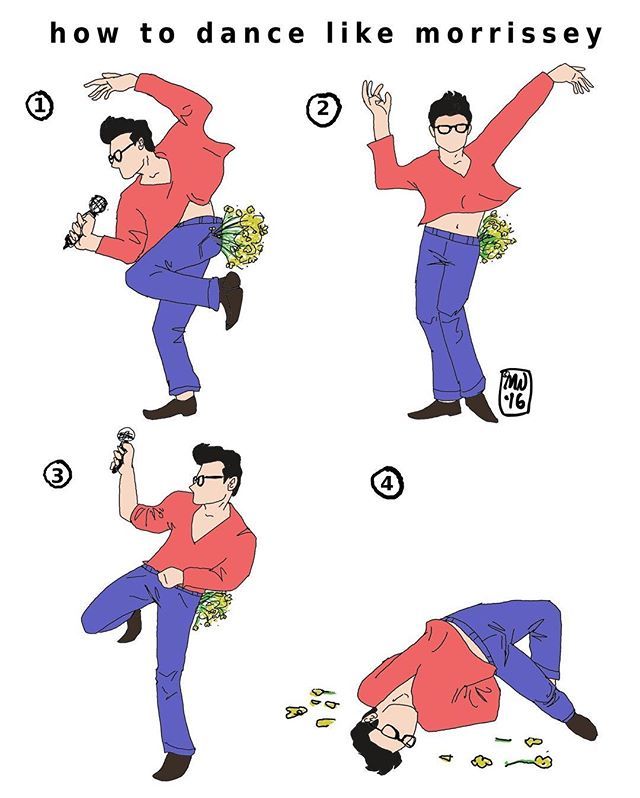 Still tilts to the sides - both fast (strength training) and slow (stretching, endurance). On tilts to the side, both of your shoulders should look into the mirror, and not at the floor - otherwise you train other muscles, and the obliques remain undeveloped. The chin on the side slopes also looks into the mirror, and not at the floor.
Still tilts to the sides - both fast (strength training) and slow (stretching, endurance). On tilts to the side, both of your shoulders should look into the mirror, and not at the floor - otherwise you train other muscles, and the obliques remain undeveloped. The chin on the side slopes also looks into the mirror, and not at the floor.
I would like to draw attention to the following points in the photo:
Look how straight she holds her neck. The head does not move forward and does not throw back. That's right, that's the way it should be.
This position can be made easier by bending your knees and rounding your back a little (the press still works, it will be easier). But the option in the photo with a straight back is more complicated and better because the back muscles will also work this way. And the legs extended at the knees are heavier, more difficult to hold them.
BUTTOCKS
There are quite a lot of gluteal muscles, and they will work differently depending on the movements.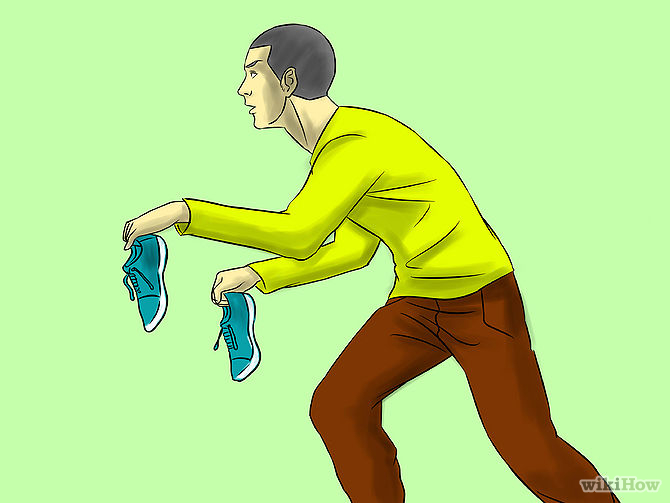 Therefore, the expression "swing ass" is somewhat abstract. But if you dance only social dances, then you should be primarily interested in the gluteus maximus muscle and the ability, if necessary, to keep (!) It in suspense during dance movements.
Therefore, the expression "swing ass" is somewhat abstract. But if you dance only social dances, then you should be primarily interested in the gluteus maximus muscle and the ability, if necessary, to keep (!) It in suspense during dance movements.
The effect of using the gluteal muscle is about the same as that of the press - stabilization of the core. Here it is only necessary to understand that the press directly stabilizes our top (spine), and the buttocks stabilize the pelvis, that is, the bottom (legs, hips, lower back). A retracted buttock limits the mobility and rotation of the hip joint, and the position of the hip joint affects the position of the lower back as well - everything is interconnected. By pulling your butt in, you limit the stride length available to you, this helps to fight drifts in the dance, especially on turns and spins.
What do you need to remember? The fact that if you pumped up a big beautiful ass in the gym, and in the dance she is always relaxed, then there is zero sense in her! Amen.
To dance, you just need to be able to pull it in strongly, "squeeze a coin" between the buttocks. Well, to maintain this position for a while - it's easier here than with the press.
Regular squats are not very suitable here, they just increase the volume of the buttocks and thighs. Much better are leg raises while lying on your stomach, and even better are real bodily tasks in dance: ballet exercises in which you always need to keep your butt. For example, ballet plies with toned buttocks, tandu and all other happiness. The bar is still very good, if done correctly, retract and twist the pelvis forward.
But this is the wrong plank! There should not be such a bend in the lower back, the pelvis needs to be scrolled forward more.
Correct bar . Compare body lines.
LONG BACK MUSCLES
In fact, this is a whole group of closely spaced muscles. It doesn't matter to us now.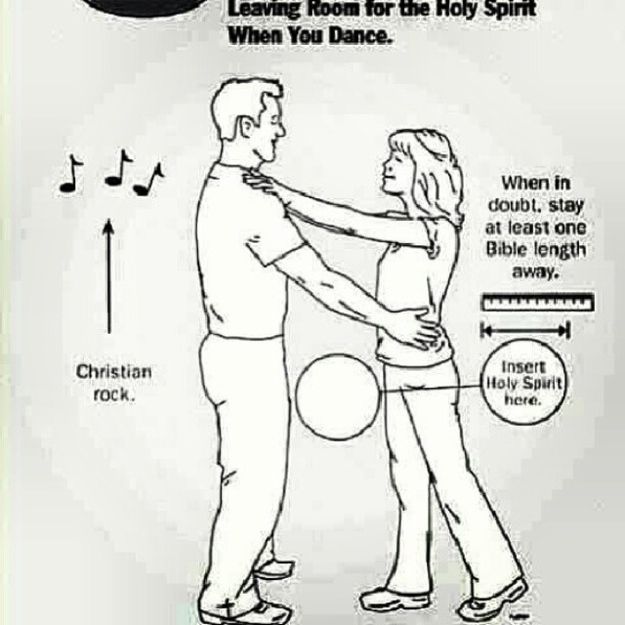 If you put your thumbs on your spine and step back a little, you will feel such powerful thick seals from the lower back and along the entire spine, passing into the muscles of the neck. It's them.
If you put your thumbs on your spine and step back a little, you will feel such powerful thick seals from the lower back and along the entire spine, passing into the muscles of the neck. It's them.
Muscles are potentially very strong and useful, and therefore sad if they are not working. You have no idea how much you are missing if you don't own them! And often they are non-working and at the same time they are still heavily clogged with incorrect operation of the case in principle. Then they have overstressed painful areas that you do not know how to control, you cannot relax them and strain them at will. Then it's even more difficult, but it's fixable.
The long back muscles pull the spine up and help keep it in a straight, straight position. Just as the abs keep the spine stable on one side, the long back muscles support it on the other side. When the teacher says "we stretch the top of the head up", then the activation of these particular muscles is meant. When you feel and control them, you feel a real physical upward pull. These same muscles keep the spine in good shape and when tilting the body, they also greatly affect your posture and body structure in the dance, the pattern of relaxation and tension, and this affects how absolutely all your movements look and feel.
These same muscles keep the spine in good shape and when tilting the body, they also greatly affect your posture and body structure in the dance, the pattern of relaxation and tension, and this affects how absolutely all your movements look and feel.
An ordinary untrained person does not feel these muscles and does not understand what it means to stretch upwards. "How to stretch, what?". Or maybe these muscles are even pumped up by boats, but it's still not clear how to reach up. This is fine. If you are working on yourself, then it is very important to learn how to master them. The technique of your rotations, centering, a smooth, stable exit from any rotations, without blockages, distortions, even with poor partner guidance, will depend on this, and in general your well-being and health will be better. When female partners fall heavily on their side in slopes and fall in turns - they do not work, there is nothing to build an axis with.
Learning to control the long back muscles is more difficult than mastering the abs or booty. First you need to remove the interference of posture, which prevent these muscles from being included in the work. Namely, you need to tighten your stomach, remove the deflections in the lower back and under the shoulder blades, remove the ribs sticking out forward. If your ribs stick out, then you a priori cannot use your back muscles normally. They are chronically tight and shortened. Stand up to the wall and try to press against the wall with your whole back as much as possible, hold the position without the wall. And strive to press the lower back, even if it doesn’t work out completely.
First you need to remove the interference of posture, which prevent these muscles from being included in the work. Namely, you need to tighten your stomach, remove the deflections in the lower back and under the shoulder blades, remove the ribs sticking out forward. If your ribs stick out, then you a priori cannot use your back muscles normally. They are chronically tight and shortened. Stand up to the wall and try to press against the wall with your whole back as much as possible, hold the position without the wall. And strive to press the lower back, even if it doesn’t work out completely.
The strength of the long back muscles is well trained by boats and tilt-ups with a straight back, but this does not teach you to reach up. For training the stretch itself, I have not yet come across anything more effective than ballet exercises in the middle of the hall. When you balance on one foot without the support of the barre, your body finds this stretch on its own, it gives stability. That's exactly what happened to me, and pretty quickly.
That's exactly what happened to me, and pretty quickly.
NECK
I wrote an article about headwork rules. You need to know these rules!
Headworks are not done with the neck muscles. But the muscles of the neck must be in a passive tone so that the cervical vertebrae are safe, so that they are not subjected to sudden traumatic movements, are not clamped or overextended. The exercises are very simple: tilt the head up and down, turn left and right, tilt the ear to the shoulder. Exercises are best done slowly and with effort. It is also very useful to work with an isometric load: press your head through the resistance of your hands. All this at the same time is the prevention of cervical osteochondrosis, strengthens muscles and promotes the health of our cervical discs.
Typical mistakes of the zouk : throwing the head back, throwing the head back on a relaxed neck, headwork through the neck muscles, asymmetrical position of the head relative to the work of the body (the head falls forward or back and outweighs).
But besides this, there is a posture error that few people talk about, and it is inherent in many. This error is chin up. We know to reach up with the top of our head. That's just the muscles of the top of the head physically can not pull us up and have completely different functions. The crown is a purely visual landmark (just not everyone is aware). But we don’t even know where the top of our head is and how it should feel. And so we raise our chin and stretch our foreheads up. In this position, the front muscles of the neck stretch upward, and the back muscles, which should work, are compressed. This is exactly the opposite of what the teacher wants from you. In addition to the physiological harm to your neck, this also prevents you from dancing: the stable position of the head is disturbed, the head begins to outweigh and fills you back. This is especially problematic on spins.
It is better to correct the position of the head at the mirror and through the same exercises, carefully watching the position of the head.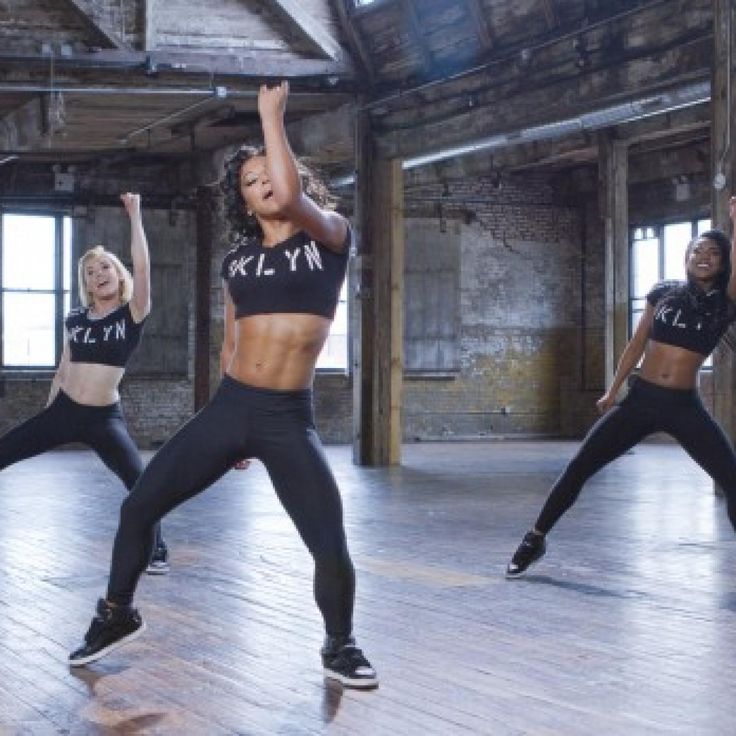 The simplest and most effective: put your hands on the back of your head. Feel for two bones at the base of the skull with your thumbs and grab them as well. Press your head on your hands and your hands on your head. Holding these bones and maintaining pressure, stretch your head with your hands a couple of centimeters up.
The simplest and most effective: put your hands on the back of your head. Feel for two bones at the base of the skull with your thumbs and grab them as well. Press your head on your hands and your hands on your head. Holding these bones and maintaining pressure, stretch your head with your hands a couple of centimeters up.
LOIN
Dancers! The lower back in the dance should be straight! (Well, almost straight, - for the most meticulous) No deflections just like that in every movement. Deflection is not styling! Chronic backbend is a lump of tension that you live with, and hit it even more in all amplitude movements. Then it can turn into a hernia of the lumbar and pinched nerve endings.
As I wrote above, you need to pump the lower press more, and activate the abdominal muscles to align the lower back and hip joint. In addition to this, it is very necessary to learn how to sit on the sitting bones with a flat back. This is generally a mandatory minimum for the normal posture of any non-dancing person. When you can just sit straight, then we go into the fold to the legs, be sure to stretch the lower back. It will be very gross. This is not a leg stretch, no need to dive head first. It is important to start folding towards the legs from the hip, trying to put the stomach and ribs on the legs. At the same time, you can stretch your arms forward, this helps to stretch yourself.
When you can just sit straight, then we go into the fold to the legs, be sure to stretch the lower back. It will be very gross. This is not a leg stretch, no need to dive head first. It is important to start folding towards the legs from the hip, trying to put the stomach and ribs on the legs. At the same time, you can stretch your arms forward, this helps to stretch yourself.
The muscles of the lower back are also trained in different inclinations with a straight back. Also, be sure to keep your lower back pressed to the floor in all pumping exercises when you are lying on your back. Especially when it comes to abdominal exercises. And standing against the wall, we press the lower back against the wall! Out of habit, it will seem that you are hunched over, but in fact, sleeping muscles just turn on, and your back becomes straighter. Try to maintain this position yourself by checking yourself in the mirror.
serratus anterior
Depressor of the scapula. If your shoulders often rise, it means that she is not in good shape, and at the same time, the muscles of the neck and trapezium are probably clamped. If this muscle does not work, the female partners do not understand the lead well, and the partners do not know how to frame and twitch their arms a lot. If the serratus anterior muscle is not in good shape, then the shoulder and shoulder blade are not the connecting link between the body and arms. The body moves by itself, and the arms and shoulders move by themselves, without coordination with the body. Connection without anterior dentate is snotty and twitchy (because with hands).
In the dance, you literally need to weld the shoulder blade to the ribs and leave it there forever. Difficult? Possibly)
You can come up with quite a few exercises to strengthen the anterior serratus. Mandatory condition: through "I can not" lower the shoulder blades. You can slowly raise and lower straight arms with a small weight, do rotations in the shoulder joint, you can stretch the elastic in different positions. The slats also pump the front gear well, just do not forget to press the shoulder blades down. All sorts of positions are good with an emphasis on the floor with your hands (I want to relax my shoulder, and then it will climb into my ear).
Rhomboid muscle
Muscle that brings the shoulder blades to the center. It affects the spread of the shoulders and the tone of the frame as well.
It is important that the muscle is in good shape, but not overstressed (!). Attempts to dance with the shoulder blades constantly gathered towards the center will kill all the plasticity in the thoracic region, and at the same time you will no longer feel the physical connection with the partner (where it is clamped, energy and subtle sensations do not pass there).
Actively turned on by spreading the arms to the sides with an institution far behind the back, you can use weights, you can lie on your stomach. On your stomach, simply spread your straight arms to the sides and tear them off the floor as high as possible. If you wish, you can find many more options on the Internet.
When training the rhomboid muscle, watch the ribs, do not bend in the chest. It can be difficult)
LEGS
The fact that any dancer needs strong, trained legs is obvious. And it would be strange to single out some individual muscles and say that they are the most necessary for social dances. All the muscles of the legs are somehow involved in performing various movements and maintaining balance. Everything is important here. Legs need to be trained in a complex and varied way. The health of your joints, especially your knees, depends on the condition of your legs (strength and stretching of the muscles). About them a little further.
It usually happens that dancers perform some kind of monotonous set of exercises that does not fully load their legs. This is not good, as you will be left with undeveloped places, the weakness of which will affect the quality of your movements and may even negatively affect the condition of your joints. For example, the most common leg exercises (lunges, squats, swings, half-toes, etc. - the basic set) usually do not pump the inner thigh muscles in any way. Ballet exercises, on the contrary, perfectly pump the back muscle group and adductors of the thigh, but load the muscles of the front and outer sides a little. Pilates works very complex with the muscles of the legs (and the whole body).
Conclusion: you need to train your legs in a complex way.
Do not ignore any "heavy" unusual exercises, because "in dance I don't need it." Use both the non-reversible position of the feet in the exercises (feet parallel) and the reversible position (heels together, toes apart, knee joint over the toes, between the thighs "clamped piece of paper"). Stand on your toes and on your heels. Remember that you need to evenly pump muscles and stretch. Inflated, unstretched legs are stiff, clogged, prone to occasional sprains. Poorly pumped, but well stretched - very weak, prone to joint injuries, dislocations.
THIGH MUSCLES
The anterior and posterior thigh muscles are usually more or less trained even just in dance, without any additional effort. Although it is better, of course, to attach them and practice more. And if you often go in for some kinds of sports, then most likely they are already well developed in you.
The typical weaknesses of an ill-trained dancer are the muscles of the inner and outer sides of the thigh. And in vain, they perform important functions.
Adductors of the thigh - a bundle of internal muscles that bring the legs to the center. The tension of these muscles allows us to maintain balance very well, literally grow to a point in the floor. They help with balance even in tilted postures when the pelvis is turned back and it can be difficult to keep the tension in the gluteal muscles. And the legs in such positions continue to hold us, if they are strongly reduced to the center (at the same time, it is not at all necessary that the legs should stand close to each other). The adductors are best pumped with ballet and scissor exercises. At the same time, different internal muscles work in the reversible / non-reversible positions.
It's also very ugly when girls have a non-closing hole between their thighs.
About the outer surface of the thigh I would like to say that if you are not going to permanently raise your legs to the sides (it is not necessary in the soush), then their main purpose is to keep the knee joint in a stable position. What's the matter here? If the thigh muscles are weak, then the knee joint can fall inward (X-legs), and over time, from this position, you will have big problems with the knee ligaments. If in the neutral position your legs are straight, not an X, then this is good, but not enough.
I just wrote that the adductors of the thigh help us balance. If two legs stand together, and through effort we press them against each other, then everything is fine, there should be no mistakes here. What if your feet are a little wider? This is the most common position for female partners when performing boneques and other things. Bring them together here, don't bring them together, all the same, 8 out of 10 girls' knees will come together to the center. This happens because the external thigh muscles are turned off, and there is also no habit and understanding. In fact, when we stand with our legs parallel, we need to carefully monitor the position of the knee. If we bring the adductors to the center to better hold ourselves, then the outer group of muscles should remain in good shape and “push” the knees a little to the sides. This is necessary so that the knee remains exactly above the foot and does not fall inward.
That's what I'm talking about. Not a very bright example, but my own))) Feet at a distance, knees together.
It is very important, when performing any squat (plié) in any position of the legs, to ensure that the knee is clearly above the foot and does not fall either in or out.
SHIN MUSCLES
Shank = caviar, caviar = shank, strengthen shins = pump calves? No, nifiga) This is a very limited perception.
Caviar needed. Calves help to confidently rise to the half-toes and stand on them for a long time, help to run, jump and land. But you won't get far with them.
Other muscles also influence the position of the foot, the names of which the ordinary dancer does not know and has never heard of. The position of your ankle will depend on the condition of all the muscles of the lower leg, the balance both on the half-toes and on the full foot. And the health of your knees will also depend on the position of your ankle. If the foot is turned inward or outward, or collapses on the outer or inner rib, and the knee is not above the foot (a typical social worker mistake: toes apart - knees forward), the cruciate ligaments of the knee joint will suffer, then pain will appear. By the way, the weakness of the calf muscles is the reason why the feet of the dancers in motion accidentally come into a clubfoot position.
Therefore, it is necessary to additionally strengthen the stabilizing muscles. located in the lower part of the lower leg and affecting the position and stability of the foot. Stretch and shorten the foot, rotate the feet in a circle, roll the feet on the inner and outer ribs, stand on the toes and on the heels (no one allowed me to stand on the heels in class, and by the way, this is quite difficult and includes the front of the lower leg), through resistance to turning the foot in and out. There are many exercises, they are all simple and just require method and perseverance.
A very effective exercise for the muscles from the foot to the thigh is to stand on one leg for a long time, just on a full foot. 5 minutes or more. At the same time, try not to sag on your hip and not substitute your free leg. It also helps a lot to stand on one leg on a balance circle (a round disc that wobbles).
Mandatory rule for standing on half toes : the weight must be over the big and forefinger of the foot and in no case should it fall on the little toes. It also depends on the stabilizing muscles of the lower leg.
FOOT
The structure of the foot is very similar to that of the palm. She can be just as sensitive and mobile. Some professional dancers achieve this. An ordinary person hardly uses the muscles of the foot. Then the brain begins to perceive the muscles of the foot as one whole, the foot becomes like an iron shovel, rigid and inactive.
Due to the lack of development of the feet, the position of the ankle is disturbed, the softness of movements is lost (the knees also suffer from this, yes), other muscles begin to clog, which try to compensate for the weakness of the feet (usually calves, thighs).
Feet are the foundation on which our whole building stands. If something is wrong with the foundation, it will inevitably cause distortions in other parts of the body: in the knees, hips, back, it can even affect the position of the head. And therefore it is important to develop the feet, increase their mobility, strength, plasticity and sensitivity.
Dancers' feet are often very clogged, especially those dancing in heels. Attempts to maintain balance on poorly trained legs lead to the fact that the dancers try to "grab the floor" with their feet - they overstrain the muscles of the foot, squeeze their fingers. From this foot can reduce. This is especially evident in the training exercises of ballet and jazz-modern: we get so used to straining our feet that where they need to be relaxed, we generally forget to do it, and our feet start to feel pain right in the exercises. On the one hand, this comes from the wrong technique of the foot, on the other hand, from the underdeveloped muscles. Developed feet do not reduce. Well, the reasons may also be the lack of some microelements, etc. In social dance, a vivid example of stiffness of the feet is when girls dance constantly on half-toes (in any shoes), practically without lowering their heels, and at the same time on bent knees. Looks ugly. This is how I dance here, it is very clearly visible: https://www. youtube.com/watch?v=lzpFeYB8nHc
Foot development exercises are not only half toe raises. It is necessary to move the fingers up, down and to the sides in isolation, lift the napkin with the toes, stretch the outer and inner surfaces. Foot massage is very useful, and for this purpose I really like a massage ball with spikes (it should be elastic, a wooden massage roller will also work). At first, I roll the ball lightly, until I feel a pleasant tickle and tingle from contact with the skin. This relaxes the tissues of the foot and stimulates blood circulation, relieving chronic tension. When the foot relaxes a little, the sensations are dulled, I start pushing the ball through the foot in different places in order to act on a deeper level. So you can find especially painful areas and suppress them longer. After such a foot massage, the balance becomes better and the legs become softer.
Here is an example of how to wake up dormant foot muscles. I made up my own mind based on what I read. I was not given this in any class. Someone will not succeed at all, someone will feel new sensations in a couple of minutes.
That's all for this article. This is a review article. Train, study your body, ask questions.
On VK you can send me your dance video for analysis, I will make a storyboard with errors and detailed comments, where you have technical errors in the sound, and where there are crookedness and obliqueness associated with the work of your body. I'll tell you what to do, how to work. I can record a detailed video answer with exercises for you. I wrote about it here: https://vk.com/wall599099_11435
I wrote this article for a very long time. I got a lot of different classes, I began to conduct thematic seminars about the work of the body in dance. While I was doing it, a lot of the material was sorted out in my head, and this affected the quality and coherence of this article. I hope that for many of you it turned out to be extremely useful and highlighted some things that you had not thought about before.
I will continue to expand on the underwater world of dance in future articles. We will definitely talk about plasticity, composure and relaxation, connection and other interesting deep things.
Who is interested in deep work with the body and lives in Moscow, I will be glad to see you at the classes :) ways to improve your connection while dancing: zoukability — LiveJournal 7 ways to improve your connection while dancing
Posted by Gaëlle Céline Le Vu, France
ways-to-improve-your-connection-while-dancing/
The article is a logical continuation of the previous one: What does your very first movement in the dance with a girl say about...
"Connection" - connection, connection, coupling.
Connection in a dance context - such mutual understanding in a pair, when the partners seem to be connected with each other, are fully synchronized , they clearly feel the leading-following of each other and represent a single whole. I cannot find the same capacious and harmonious analogue of the word connection in Russian, so I will use the English version. The concepts of "contact" and "relationship" are closest, but they are not quite the same thing.
A dance without a connection is not a complete dance. One or both partners are immersed in themselves, focused on the mechanical execution of movements, do not feel their partner, use him as a simulator for working out ligaments. The dancers hold hands, but they are not together . The ability to make many complex connections, even if they are technically perfect and you are a teacher in general (and suddenly) - does not affect the quality of the connection in your dance in any way;)
The topic is especially relevant, painful and suffered by me as a partner. You can live in peace and enjoy your role as a simulator and a moving mass, if you have never met this connection. But one day you will come across a partner with whom you will feel like you are somewhere in space, you want to dissolve in this dance. And your world will never be the same again. You'll understand what I'm talking about when it happens.
There is a lot of text ahead, but if you read everything carefully, think it over and start using it, then there will be a lot more happy smiles on the dance floor, believe me! I encourage affiliates to bookmark this article and re-read it periodically.
Ready? Go!
________________________________________
"The best thing about a hug is the charm of eternity in a couple of seconds. It's magic that allows two people to ascend to heaven in an instant."
(Anna Giacomo)
The first article talked about the benefits of hugging, building and maintaining contact in dance. But it's not always so easy: you may not quite understand how to achieve this, even if you really want to. In this article, we will look at several ways to improve the connection.
1. Feel. Enjoy the moment.
Don't let the hug be purely mechanical: don't automatically put your hands on your partner while you look around and think about the next move. Enjoy this moment, close your eyes (while you are standing still, it is not necessary to check what is happening around). Relax, open up to your partner, let her relax with you. Be attentive to her. Maybe she smells like sweet perfume, or maybe she's sweating a little. Or she gets nervous and thanks god just for that0002 , you have time to be with her before the dance begins. Maybe she's excited and looking forward to having a great time. Maybe you can hear how fast her heart is beating. Perhaps she is too tense: she is tired, which means that your dance should be easy, or is she just nervous and you will help her relax? Pay attention to these details, they can be seen. Be here and now. Your partner will know if you are not with her .
2. Relax.
Guys... I often hear some of you say things like "but she doesn't want to cuddle" or "she doesn't want to wait." Who is leading here? I thought it was you?..
This is the first moment. YOU are leading. This means that most of the decisions here are made by you. This does not mean that you should try to get your partner to do what she cannot do, or lead to something unnatural with her body movements, or try to perform with her the very movement that you so badly want to work out. This means that you must be attentive to her, see what is needed, and based on this, you begin to lead and show that you are here now for her.
If you feel that your partner is walking without guidance, which is typical of many beginners, think about it: why is that? I'm sure it's often because she's nervous. An experienced partner knows how to wait for a lead, but it takes time to learn this, it's not as easy as it seems.
If you feel that your partner is not waiting for you, gently make her wait . If you see that she is in too much of a hurry, slow her down . Create gentle tension in your hands, and if you really need to stop her now, you can gently press your palms or thumbs into her hands. In most cases, there is no need to use them, and therefore, when you do, your partner will feel it and will be more attentive to you. Don't follow her lead! I'm serious.
Second moment. Whatever you do, your partner will try to mirror you . If you see that she is nervous and in a hurry, and you begin to hurry along with her (because sometimes you start mirroring us too), what good will come of it? On the contrary, why not force her to be attentive to you in the same way that you are attentive to her. Give her undivided attention, and then she will begin to relax and trust you => and be better behaved. Do not think that the partner does not want to lead. Once again, in order for her to feel led and patiently follow, she first needs to relax. So, if you are unable to help her relax, she will not melt in your hands and will not behave as well as she could. If you don't show that you are there for her, she will go "somewhere else" and it will show up in your dance. The dance will look and feel disjointed.
But before you can help your partner relax, you must also relax yourself. Relax your shoulders, remove tension from your neck, the girl will feel it, and then both of you will be able to feel the connection better. (Eventually, she wraps her left arm around you as you dance into a close embrace, she feels ALL of your tension.)
To recap. Relax yourself first. The partner will feel it and will also relax.
3. Touch heads.
This is optional, but a very good tool. Some partners may not want this kind of closeness with you, some of you may be too sweaty, or your shyness gets in the way. But let's assume the conditions are ideal. Use it as much as you like!
The simplest position is the close hug, but other variations can be used. For example, if you turned your partner and stand behind her, then it can be very pleasant for her to feel the touch of your head. You will feel more attentive to her, and she ... Believe me, she will be very good! But don't forget to feel it. Don't do these things because you have to. Relax and enjoy them.
In general, think about when you can use it and use it whenever possible.
4. Look at her. Or her movements.
Vision is a very important sense for a person. Let's use it!
From both a practical and an artistic point of view, it will be very good and beautiful if you look at the movements that you create. You can look directly at your partner, but if you stare completely intently, then this is somehow not very good. Not looking at her at all is also unpleasant and strange. But you definitely can't go wrong if you look at the moves you're leading. Why? Because you are constantly following her with your eyes, but at the same time you are not trying to aggressively look into her soul, if you know what I mean. Are you doing a simple laterao? Engage your chest and head, let them follow your arms. Do you lead to headwork? Follow these movements with your eyes and head, then you can connect your shoulders. Add more life to your body, accompany your partner's movements with your body. The girl will see it, at least feel it. This will greatly enrich your dance and add depth to it. Just think about what you are focusing on.
If you look somewhere else and at other couples, it looks like your insecurity (and this will negatively affect the connection, you are the host), or even as rudeness if things are really bad. Most likely, the partner will think that you are too shy and will try to understand you. Be careful with the image you create. Just focusing on the right things will already give you a huge advantage and make you feel better.
!!! This does not mean that you should not watch where you are going.
If you want to lead to a movement that involves moving in space or amplitude work with the partner's body, first look WHERE you will lead her, and then lead . This way you will avoid clashes with other couples and add some style to your dance, because. your gaze will predict the next move.
Remark: very often partners do not take into account the amplitude of the lady's head movement on headwork, different rotations, etc. Even if the partner stands with her feet in one place, the amplitude of movement of the upper part of her body can be greater! It is very unpleasant in rotation to crash your head into another pair.
5. Vary the tempo.
Yes, girls are sometimes too demanding, and learning to lead can be difficult. But if you practice, it will get better and easier.
One of the things girls go crazy over is musicality, or let's call it changes in speed for now. From simple, you can lead to some movement and in the process change its speed. It works with anything, anywhere, anytime.
The easiest way to use it is when driving. It doesn't matter if you are opposite, or to the side of your partner, or behind - imagine that you are taking her for a walk. Listen to music. If you hear a fast succession of accents or a melody build up in speed, why not speed up your walk? If the speed of the music is the same, then you can go at a steady pace, or play around and change the speed as you like. Why not? If the music slows down and you are walking at a normal speed, don't get hung up on the 1-2-3 count, you can use slow and the second quick, and skip the first one (tum chik chik). Or you can slow down even more and use only the slow beat (tum chik chik) Everything is possible.
Just add variety to your movements, don't dance at the same pace all the time, play with the music. Play with your partner. With great probability, this will increase her attentiveness, she will have to become more attentive to you, and the connection will become better.
6. Keep in touch.
One of the main rules of a good connection is to keep in touch. Have you ever had a professional massage? Have you noticed that the massage therapist constantly keeps in touch with you? Even if he needs to take oil or something else, he tries to keep contact with you with one hand.
If you lose a contact, you need to rebuild it. And if the connection was not very good, then you run the risk of destroying everything that you have just achieved. One of the easiest ways to maintain contact is to place your right hand on your partner's back as she makes a simple turn and now has her back to you. This is not just a rule of "good technique", it allows the partner to feel you and understand where you are. She will know that you are still here.
If you follow this simple rule well, your partner will feel more comfortable and trust you more. Naturally, she will not be able to explain why she felt this way, she will remember the dance as "it was very nice." But you know ;)
It's the little things that make for a great connection, and therefore a great dance.
7. Waves and other bodywork .
Last but not least. In a conversation on this topic, I cannot but mention the waves.
There are very, very many options for the execution of waves, you can write a separate article about this. But within the topic of connection, distance and tone are of key importance.
Partners:
Pay close attention to your partner's hand on your back. Do not arch your back, do not try to go to your partner if he is not leading. He will lead, not you. Be sure to pay attention to this moment. Most likely you think that this does not apply to you, but my experience of conducting for a partner shows that 80% of girls do not feel and do not understand my hand on their back. Every time I have to explain that I need to lightly press my back into my hand , and then I can feel the connection. Focus on your back, feel your partner's hand. If the hand moves away, then you follow it! Once you work on this, you will be much better behaved. Just give light pressure to your partner's hand and let him decide when to start and end the movement, when to slow it down, etc.
For partners:
Keep a good frame, put your right shoulder and arm in place. Don't twitch furiously, it won't help. Stand straight, your chest is the basis on which the girl will make a wave. You can also make a small wave with her, but don't make it stronger than your partner, it looks very strange.
